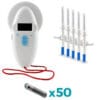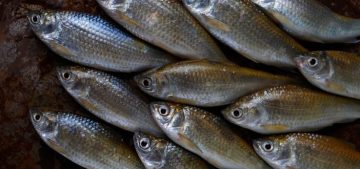How Fish Tagging Works: All the Methods (Implant, External, Acoustic, RFID)
If you work on the water long enough, you learn that guessing is expensive. Missed migrations, invisible mortality, and mystery movements turn management into a coin toss. Fish tagging replaces that guesswork with hard data, but only when the right method matches the question, species, and setting. Here’s a practical, no-fluff guide to every major approach and how to use them well.
Start With The Question, Not The Gadget
Before you buy a single tag, outline what you need to learn. Are you proving site fidelity, mapping seasonal routes, timing fishway passages, or studying thermal preferences? Fish tagging succeeds when the study objective dictates the technology, not the other way around.
Think through six basics:
- Study scale and duration
- Species size and morphology
- Habitat type and water chemistry
- Acceptable handling time and stress
- Budget for tags and receivers
- Likelihood of recapture or recontact
When you anchor choices to these constraints, fish tagging becomes a clean experiment instead of an expensive adventure.
Method 1: Internal Implant Tags
Internal implants sit inside the body cavity or, for small ID chips, in muscle. They include simple ID microchips and advanced archival loggers that record depth, temperature, or light for later download.
Best for
- Mark recapture, survival, and growth
- Fine-scale physiology with archival loggers
- Species where external hardware increases predation or drag
Handling and welfare
Use anesthesia for abdominal implants and aseptic technique. Keep handling brief, water exposure minimal, and incision size as small as skill allows.
Data quality
ID chips deliver binary presence when scanned. Archival loggers produce continuous time series that become gold once recovered. For both, careful tag placement relative to organs and buoyancy is essential to minimize behavioral changes and rejection.
Why choose it
Minimal long-term drag, hidden from predators, and highly durable. The tradeoff is that you need recapture or programmed recovery to see the data.
Method 2: External Electronic Tags
External devices are secured with sutures or anchors. They shine when the sensor must touch the environment or when a tag is designed to release and report later.
Best for
- Environment sensing where water contact matters
- Release and surface uplink designs
- Species unsuited to surgery
Operational notes
Expect some tissue response, risk of tag loss, and added drag. Pilot tests on attachment sites, anchor styles, and retention times are worth their weight in saved samples.
When to pick it
You need ambient measurements, can accept some visibility and drag, and plan for loss mitigation with backups and realistic sample sizes.
Method 3: Acoustic Telemetry
Acoustic transmitters emit ultrasonic pings that encode ID and sometimes sensor data. Hydrophones detect pings either from a tracking vessel or from fixed listening stations.
Best for
- Movement ecology in rivers, embayments, and coastal corridors
- Residency and timing studies at gates, reefs, or channels
- Simultaneous monitoring of many individuals
Network design
Coverage beats wishful thinking. Model sound paths, spacing, and noise before deployment. Calibrate range in situ and maintain receivers on a schedule.
Insights
Position estimates resolve to tens to hundreds of meters depending on array geometry. That is plenty to document clustering, routes, and holdover behavior. In analytical workflows, you will often estimate tag location by combining detections from multiple stations and applying filters for false positives.
Why choose it
Continuous presence, long study durations, and no need to recapture. The tradeoff is infrastructure and maintenance.
Method 4: RFID and PIT Systems
Passive Integrated Transponders are tiny glass-encapsulated microchips injected into the muscle or the body cavity. They have no battery and respond only when energized by a reader field.
Best for
- High throughput identification at chokepoints and culverts
- Fishways, hatcheries, and research canals
- Long lifetime identity with minimal mass
Reality check
Detection ranges are short, so gate design directs fish within the read range. Readers can be handheld or fixed. Once healed, the tag’s effect is negligible if the size is appropriate.
Why choose it
Low tag cost, extreme durability, and reliable identity at the places that matter.
Choosing Equipment Without Guesswork
Procurement should flow from the protocol. Create a checklist based on study objectives, environmental constraints, and power logistics before looking at fish tagging products, then validate with a small pilot to confirm performance and retention in your species.
When The Weather Does Not Cooperate
Cold fronts, turbid floods, and rough seas are not excuses to cut corners. Build contingency protocols for tagging fish in harsh conditions that include stricter handling time limits, extra oxygenation, and clear no-go criteria to protect both data quality and animal welfare.
Planning Your Workflow From Dock To Dataset
A successful fish tagging study is a chain. Strengthen every link.
Pre field
- Protocols, permits, and ethics approvals
- Power budgets, spare parts, desiccant, and labels
- Calibration of readers and receivers
In field
- Cold chain for anesthetics and wound care supplies
- Clean hands, clean tools, and clean water for recovery
- Metadata on species, length, weight, and tag ID
Post field
- Immediate data offload with checksums
- Range testing summaries and detection diagnostics
- Versioned storage and documented processing scripts
Treat data like specimens. Label once, verify twice.
Getting The Most From Your Data
The strongest studies blend telemetry with environmental context. Match detections with flows, tides, temperature breaks, or dissolved oxygen to tell the ecological story. Robust fish tagging analyses also plan for missed detections, bias from variable coverage, and realistic attrition rates. Pre-register decisions on filtering, residency rules, and movement thresholds so your inferences stay clean.
Field Ethics Are Non-Negotiable
Short handling, cool and oxygenated water, and clear-cut stop rules protect fish and your study’s credibility. Build humane endpoints into the protocol and train everyone to the same standard. Strong ethics are a signature of all good fish tagging programs.
Quick Method Matchups At A Glance
- Need identity through a dam or ladder: Choose PIT.
- Need continuous routes along a shelf or river: Choose acoustics.
- Need ambient temperature or light exposure: Choose external sensors or archival implants.
- Need long-lived ID with minimal drag: Choose internal implants.
Final Pieces People Overlook
Receiver maintenance is fieldwork, not paperwork. Revisit arrays before batteries die and memory fills. On the analytics side, document all assumptions. Transparent methods make fish tagging results useful beyond one season or one team.
Bring It All Together With VodaIQ
When you want data you can trust and stories you can defend, you need a plan that starts with your question and ends with clean, analyzable tracks.
Build Your Best Tagging Study With VodaIQ
From study design to deployment to analytics, VodaIQ helps you choose the right method, optimize tag location coverage, and turn detections into decisions. If you are gearing up for your next fish tagging project, let’s design a protocol that fits your species, your waters, and your goals. Reach out to VodaIQ and tag smarter, not just more.





Add comment